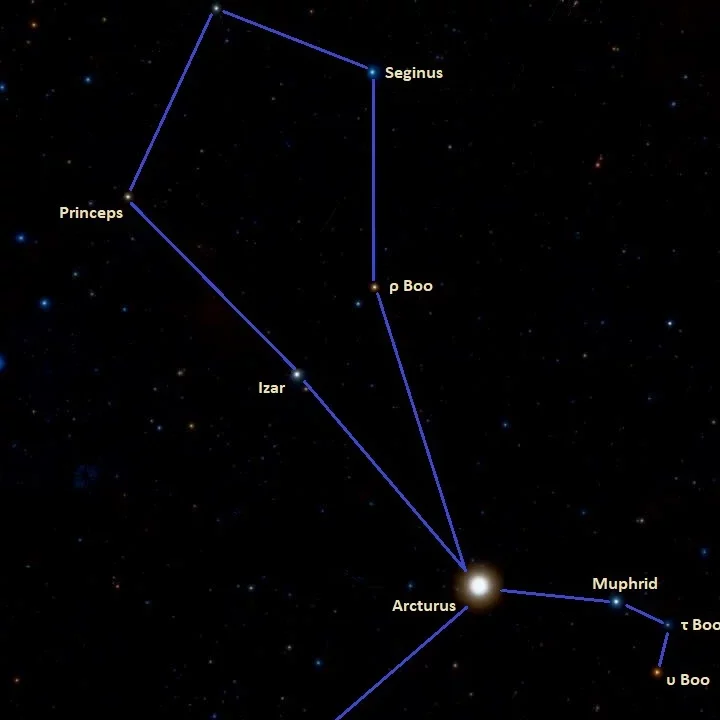
The Serpent constellation is a distinctive formation found within the equatorial celestial regions. In contrast to others, it is composed of two distinct parts, with the Serpentine constellation situated between them. Consequently, one segment, known as the Serpent’s Head, can be found in the northwestern direction, while the other, referred to as the Serpent’s Tail, is situated to the east.


It holds the 23rd position among all its sections as it covers 637 square degrees of the sky. The Serpent constellation is also divided into two regions and, consequently, has numerous neighboring constellations.
Indeed, each region has its own set of neighbors, but the Serpentine constellation is a common neighbor. For instance, the Head is bordering Libra, the Wolf, Hercules, Virgo, and the Northern Crown. On the other hand, the Tail is adjacent to Eagle, Sagittarius, and the Shield.
The snake lies coiled in a circular shape, appearing vulnerable among all creatures, avoiding eye contact, although there is no disgrace in serpents. It appears humble, engrossed in its own thoughts. It grins, but beware, if provoked, it will reveal teeth sharper than a steel needle.
An-Nabiga Az-Zubiani.
Originally, Ptolemy included only the Head of the Serpent in his renowned star catalog. However, the rest of the constellation belonged to the Serpentine. It was not until the 20th century that the modern boundaries of this region were established.
In fact, references to the Serpent constellation can be traced back to ancient Greek mythology. According to the myth, Asclepius, also known as the Serpentine, son of Apollo, acquired knowledge from a snake. By utilizing this knowledge, he possessed the ability to restore life through the use of medicinal plants.
The stars that make up the Serpent constellation
There are a total of 106 stars visible in this region to the naked eye.
The most prominent star is undoubtedly Alpha. It is a binary star with a visual magnitude of 2.623. It is known as Unikalhai, which translates to “heart” or “neck” of a snake.
Coming in second place is an orange subgiant known as This one, with an apparent magnitude of 3.26.
In third place, we have Mu. It is a white dwarf with a luminosity of 3.54.
Following closely are Xi and Beta, which are both triple star systems. They have brightness levels of 3.54 and 3.65, respectively.
Epsilon is a white dwarf that belongs to the main sequence. It has a stellar magnitude of 3.71.
And in this constellation, Delta, Nu, and Iota are represented as a binary system. The magnitudes observed for them are 3.8, 4.32, and 4.51, respectively.
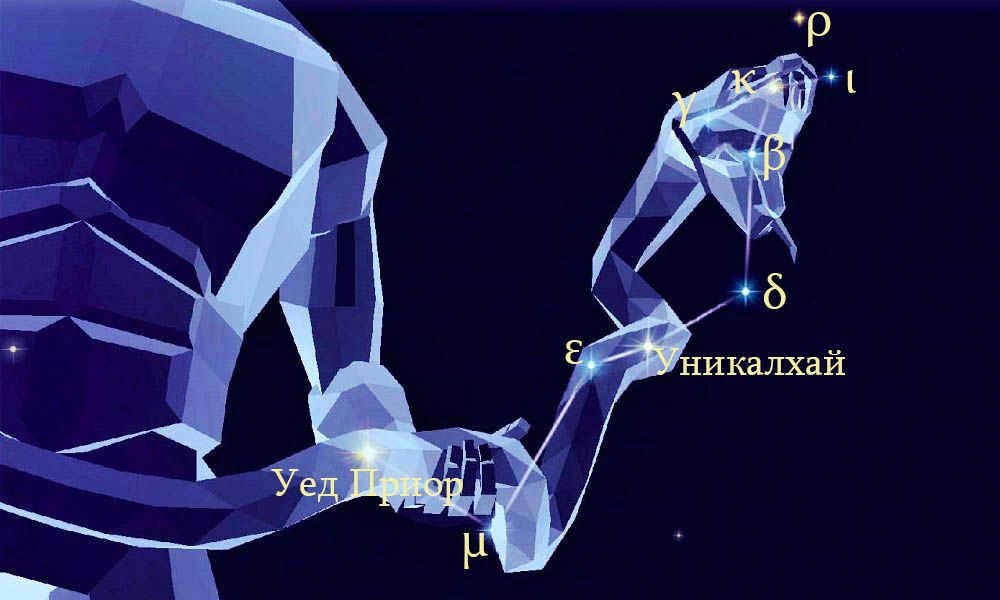
Kappa is a massive luminary that shines with a vibrant red color. Its apparent magnitude measures at 4.09.
Gamma and Lambda are both yellow dwarf stars, with luminosities of 3.85 and 4.43 respectively.
Theta — Alia is named after a snake or the tip of a tail. This system consists of three components, two dwarf stars, and one yellow luminary. Their combined apparent magnitude is 4.62.
Interestingly, there is an entire star cluster called Tau Serpents. It contains four giant stars, two dwarf stars, and two white stars.
Chi Snakes and Gliese 710 are both main-sequence dwarf stars, with luminosities of 5.34 and 9.69 respectively.
R of Snakes is a red giant star, known for its variable nature of the Mira type. Its luminosity measures 7.1.
There are a few additional yellow dwarfs worth mentioning, such as HD 136118 and HD 168443. They have visible visual magnitudes of 6.94 and 6.92, respectively.
Naturally, this is not an exhaustive list of all the stars residing in the constellation. Currently, there are at least 15 known celestial bodies in this constellation that have planets orbiting them.
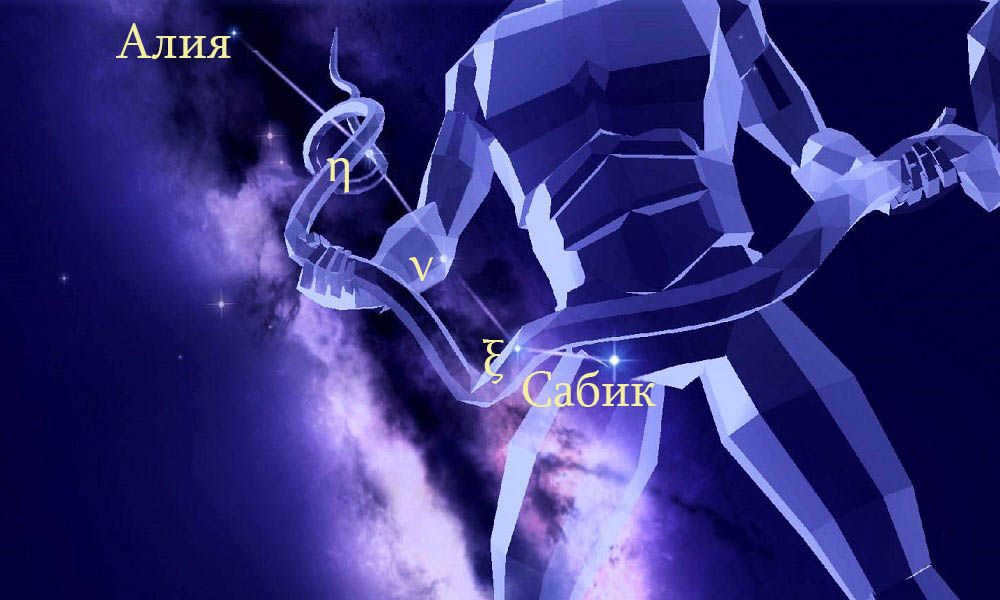
The celestial serpent’s contents
Primarily, the constellation Snake boasts a pair of Messier objects:
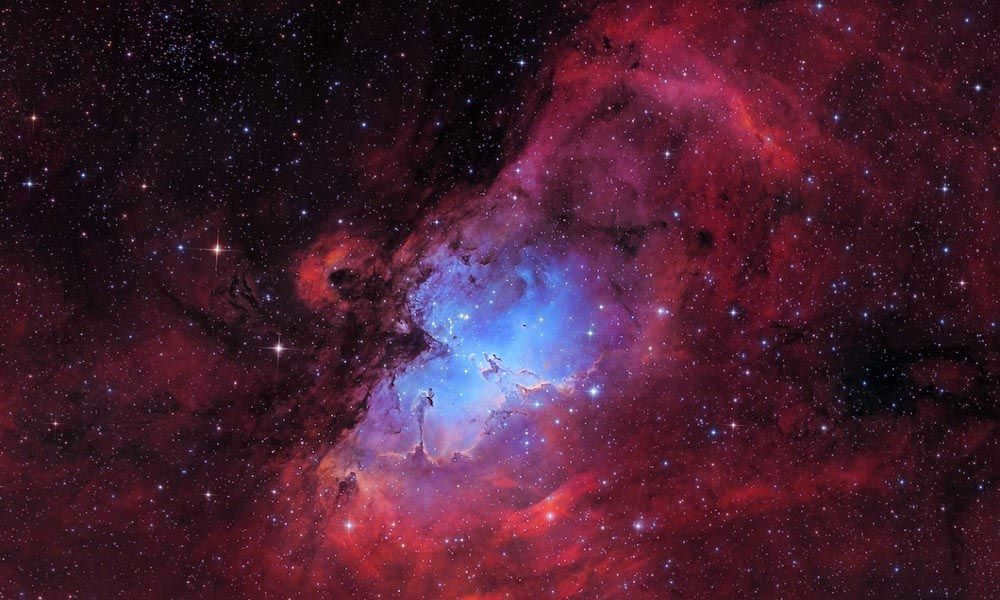
- The Messier globular cluster known as Messier 5 was previously believed to be a nebulous region. However, it is actually home to over a hundred thousand stars, with an average apparent magnitude of 6.65.
- Messier 16, also known as the Eagle Nebula, resembles the majestic bird after which it is named. Interestingly, this region is home to the famous Pillars of Creation, where active star formation is occurring.
There are also a number of nebulae concealed within the constellation of the Serpent:
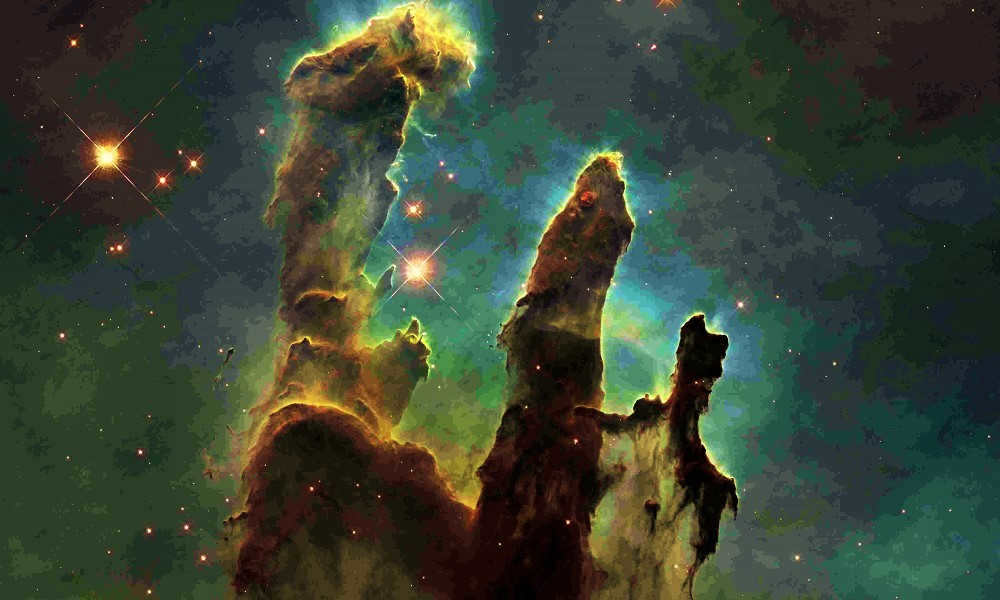
- a center of diffuseIC 4703located at the core of M16;
- the wide and brightSh2-54emission stands out;
- the Red Square (MWC 922) is a bipolar nebula with a clearly identifiable shape.
By the way, the region under consideration contains a group of galaxies known as The Seyfert Sextet, named after its discoverer Carl Seyfert. This group consists of six systems, including the brightest lenticular galaxy, three spiral galaxies, one S0 type galaxy, and a tidal tail.
Moreover, the area also contains the Dying Star Galaxy, which was formed through the merger of two systems. Interestingly, this is the first discovered merger that exhibits a strong internal energy flow.
Additionally, another pair of interacting galaxies has been discovered in this region. Their merger has given rise to a new, highly luminous infrared system called Arp 220. This system happens to be the closest of its kind to us.
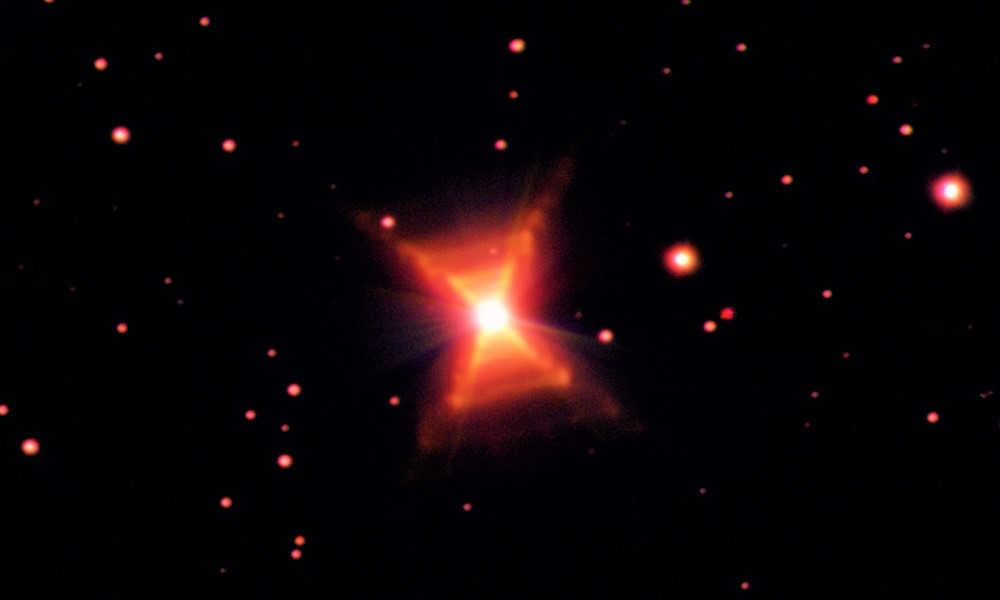
Furthermore, there are other celestial objects:
- spiral galaxies identified as NGCs: 5921, 5964, 5970, 5972, 5962, and 6118;
- Hoga galaxy entity showcasing a distinctive ring formation comprised of vibrant blue stars;
- globular clusters Palomar 5, NGC 6535, and NGC 6539;
- open star clusters IC 4756 and NGC 6604;
- Southern star cluster, consisting of 50 elements, undergoing active star formation.
It should be mentioned that during December, there are two meteor showers that can be seen: Omega Serpentids and Sigma Serpentids.
In the northwest part of the constellation, there is an asterism called Serpent’s Head. It consists of three stars: Beta, Kappa, and Gamma. Collectively, they create a noticeable triangle.
Observation
Snake constellation can be observed from all regions of Russia since it is visible at a latitude range of +74 to -64 celestial degrees. However, the most favorable conditions for observation are in June.
Volopas is a constellation located in the northern hemisphere of the sky. It is the 13th largest constellation among all 88 constellations, occupying an area of 907 square degrees on the celestial sphere. Volopas is perfectly visible in latitudes ranging from +90° to -34°. The best time for observation in Belarus, Russia, and Ukraine is during April and May, although it can also be easily spotted in the summer months in the starry sky.
General information
General details
Direct Ascension
Most luminous stars
(magnitude < 3 m )
Streams of meteors
Adjacent constellations
Chronicle

Volopassus is a historic constellation listed in Claudius Ptolemy’s Almagest catalog of the celestial sphere.
Arcturus – the first star to be observed with a telescope during daylight hours. This milestone was achieved in 1635 by French astronomer Morin de Villefranche. It is also the first star in which Galileo discovered discernible movement in space in 1717, with a rate of 2.3 angular seconds per year, corresponding to a speed of 120 km/sec.
In Hevelius’s atlas, the maps were presented in a mirrored fashion compared to other editions, giving the impression of looking at a transparent celestial sphere with the stars arrayed on it, as if viewed from the outside.
Legend of the constellation of the Volopassus
The Volopassus, also known as the Shepherd, is a celestial formation located in the northern hemisphere. This constellation was initially documented in a publication by the renowned Greek astronomer Ptolemy during the 2nd century. Its name, originating from Greek, signifies “shepherd” or “plowman”. In Greek mythology, the Greeks referred to this constellation as Arctophylax, which translates to “Bear the watcher” or “Bear the protector”.
The constellation Volopassus bears a resemblance to a shepherd holding a staff and leading two dogs on a leash. The precise origin of the constellation’s name remains a mystery, although it is linked to various myths. One myth suggests that Volopassus was a shepherd who guided tethered cattle along the polar axis within the Big Dipper constellation, accompanied by two dogs from the Hound Dogs constellation. Other legends associate Wolopassus with Atlas due to their close proximity to the North Star. Additionally, Volopassus is credited with inventing the plow, earning him a celestial position.
There is another legend that connects Volopasa to the tale of the Great Dipper and Arcas, the offspring of Zeus and Callisto, who was raised by her father Lycanus. During Zeus’ visit to Lycanus, the father sent his son to attend to the god during dinner to verify his identity. As a consequence of this action, Zeus, in his anger, transformed Lycanus into a wolf. Meanwhile, Callisto, Arcas’ mother, was transformed into a bear by Zeus’ envious wife Hera. Unaware of her true identity, Arcas immediately began to chase after her in the forest. However, Zeus decided that both mother and son should be immortalized in the sky. Thus, they were transformed into the Great Dipper and Volopasa.
Chinese myth
China also possessed its own myths regarding the source of the various constellations in the celestial sphere. One such myth is the tale of the Magpie and the Weaver. In this story, a weaver named Zhi Nyu resided on the eastern shore of the Silver River, which was actually the Milky Way. Zhi Nyu would skillfully craft fluffy clouds on her loom. While there were other celestial beings present, Zhi Nyu was by far the most exceptional among them.
Living on the opposite bank was a cattleman named Nyu Dan, who took care of an aging ox. This ox held great value to him, and he made every effort to ensure its safety. One fateful day, the ox astonishingly spoke to its master, revealing that Zhi Nyu, a mesmerizing young woman, would visit the Silver River at a specific time each day. The ox also imparted to the cattleman the secret to making this captivating girl his wife: he must discreetly take her garments. Trusting the ox’s guidance, Nyu Dan followed its instructions diligently. When the designated hour arrived, he patiently waited by the river for the arrival of Zhi Nyu and her sisters, who intended to bathe. As the sisters disrobed and entered the water, the cattleman swiftly snatched the weaver’s clothes. Startled by the presence of a stranger, the other sisters hastily dressed and hurried away, leaving Zhi Nyu alone. The young man informed her that he would only return her attire if she agreed to marry him. And so, they spent many years together, their enduring love immortalized in the constellations that grace the heavens.
The primary celestial bodies of the Volopassus constellation
Arcturus
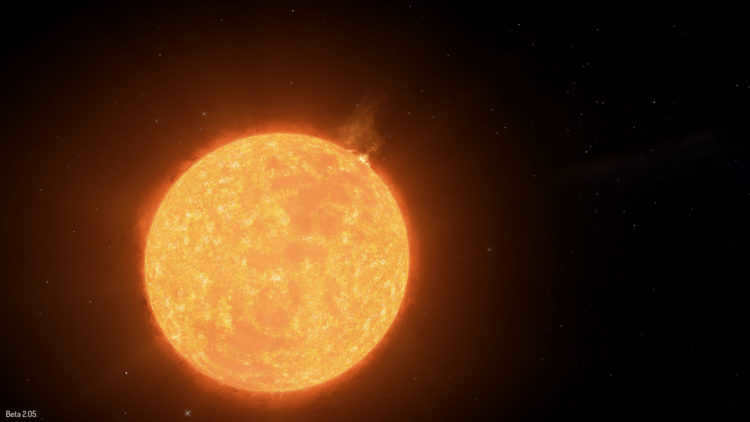
Arcturus (known as Alpha Boötis) is a giant star classified as K1.5 IIIpe, which means it has an unusual light spectrum and shows emission lines. It is located 36.7 light-years away from us and has a luminosity 110 times that of the Sun. Arcturus is moving at a speed of 122 km/s relative to our solar system. It will make its closest approach to the Sun in approximately 4000 years.
Arcturus is the third brightest star in the night sky and the brightest one in the northern hemisphere. Its apparent visual magnitude is -0.04. However, it is sometimes considered the fourth brightest star, as it is a binary system with a combined magnitude of -0.27.
However, Arcturus also holds the distinction of being the third brightest star in the night sky, coming after Alpha Centauri A (the brightest star in the Centauri constellation and the fourth brightest star overall). The name Arcturus translates to “guardian of the bear” in ancient Greek. This star can be found at the left foot of Volopassus, situated near the Big Dipper and Little Dipper.
If you want to locate Arcturus, simply follow the arc formed by three bright stars that make up the handle of the Big Dipper. Arcturus is part of the Local Interstellar Cloud, which Earth and the Solar System are currently passing through. This cloud has a diameter of 30 light-years. Arcturus is considered to be an older star in the disk, and it appears to be traveling alongside a group of 52 other older disk stars collectively known as the Arcturus Stream.
Neckar
Neckar (Beta Volopassus) is a yellow giant of the G-type located 219 light-years away. It belongs to the category of flaring variable stars that experience periodic increases in brightness for a short duration of time. The name Neckar originated from a mistake made during the transliteration of the Arabic term meaning “cattle driver”. Additionally, this celestial body is occasionally known by the name “Meres”.
Seginus
Seginus (Gamma Volopassus) is a type of variable star in the Shield delta category, exhibiting changes in brightness as a result of pulsations on its surface. It can be found approximately 85 light-years from Earth. With a period of 6.97 hours, the star’s magnitude fluctuates between 3.02 and 3.07. Its spectral class is A7III.
Isar
Isar (Epsilon of Volopassus) is a binary star system located 300 light-years from Earth. It consists of a vibrant orange giant star and a smaller, dimmer main-sequence star. It is also known by the name Pulcherrima, which means “beautiful” in Latin. Additionally, the name Isar translates from Arabic as “veil”. Other traditional names for this celestial object include Mirak, which means “loins” in Arabic, and Mizar.
Mufrid
Mufrid (Eta Volopasa) is a binary star system that exhibits spectroscopic characteristics and has an orbital period of 494 days. It is situated in close proximity to Arcturus, which is located at a distance of approximately 3.24 light-years from our solar system. The star system has traditionally been referred to as Mufrid, a name derived from the Arabic phrase “a distant star from a man with a spade”. It is also commonly known as Saak. Mufrid is positioned at a distance of 37 light-years away from Earth and belongs to the G0 IV spectral class. Notably, it displays an abundance of elements that are heavier than hydrogen.
Alcalurops
Alcalurops (Mu Volopasa) is a threefold celestial body situated 121 light-years away from our position. The most luminous constituent is a yellowish-white F-type subgiant with a visible magnitude of 4.31. It is accompanied by a binary star positioned at a separation of 108 arc seconds. The appellation originates from the ancient Greek term “kalaurops” denoting a “shepherd’s staff”.
Merga (38 Volopassus) is a star that belongs to the spectral class F7IVw and is located 153 light-years away. The name of this star is derived from the Arabic phrase meaning “chained woman”. It has a visible magnitude of 5.74.
Nadlat
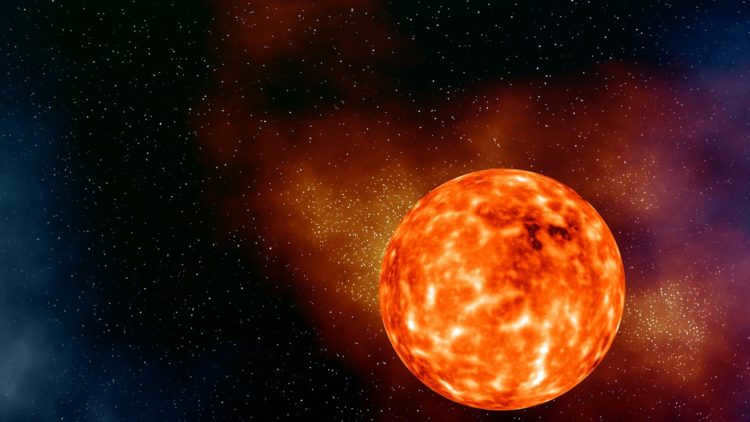
Nadlat (Psi Volopasa) is an orange giant of the K-type located 250 light-years away. Its apparent magnitude is 4.52.
Τ Volopasa
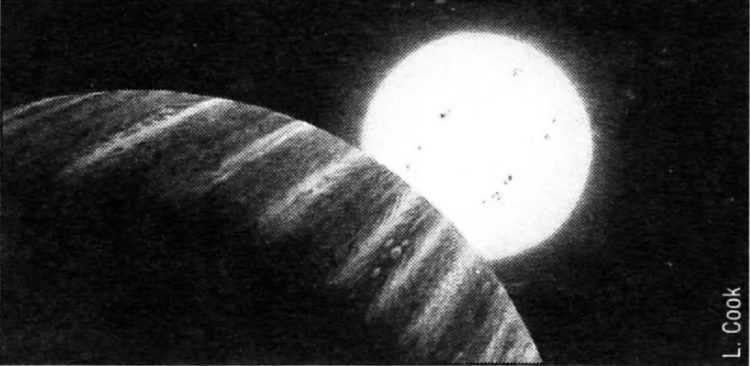
Tau Volopasa is the name of a binary star system located 51 light-years from Earth. This system consists of a yellow-white dwarf star and a faint red dwarf star. Astronomers have also found an exoplanet orbiting the yellow-white dwarf star, which was first discovered in 1996 and later confirmed in 1999.
The celestial objects found within the Volopassus constellation
The Volopassus supergroup
The Volopassus Supersphere, also known as the Great Void of Volopassus, is a celestial region in the sky characterized by an unusually low number of galaxies. Spanning a diameter of 250 million light-years, this spherical area can be located at a direct ascension of 14 h 20 m and a declination of 26°. Its discovery can be credited to Robert P. Kirchner, an astronomy professor at Harvard College, who first observed it in 1981 while conducting a survey on galactic redshifts. Within the void, it is estimated that there are at least 60 galaxies. American astronomer Gregory Scott Alderling commented on the significance of this discovery, stating, “Had the Milky Way been situated at the heart of the Volopassus Supercluster, the existence of other galaxies in the universe would not have been realized until the 1960s.”

Volopassus I (also known as the Volopassus dwarf galaxy) is a small spheroidal galaxy located approximately 197,000 light-years away. It is classified as one of the dimmest galaxies in the known universe. With an absolute magnitude of -5.8 and an apparent magnitude of 13.1, Volopassus I remained undiscovered until 2006. This galaxy is in orbit around the Milky Way and due to its unique shape, it appears to intersect with our own galaxy. Volopassus I spans an impressive width of 720 light-years.
Meteor showers
Meteor showers. A radiant known as Quadrantid passes close to the Volopassus Delta. This meteor shower can be seen from January 1st to January 6th. The peak of this shower is observed on January 4th and consists of approximately forty meteors per hour.
Exploring the Celestial Sky
Finding Volopassus in the vast night sky is a relatively easy task. It can be spotted by following the Big Dipper towards the south. The “handle” of the Big Dipper points directly towards Volopassus and the constellation Arcturus. Another useful guide for locating Volopassus is the constellation Capricorn. When Capricorn rises high in the sky, it can be traced with the assistance of Virgo and its brightest star, Spica. Arcturus is situated not far to the northeast of Virgo.
If the visibility conditions are favorable and the night is devoid of moonlight, the Little Dipper can serve as a useful reference point. Volopassus can be found exactly beneath the Little Dipper when it reaches its highest position above the horizon. The constellation Volopassus is prominently visible across Russia from April to September.
Volopassus has always fascinated observers due to its remarkable visibility to the naked eye. Ancient astronomers even depicted Volopassus in their drawings and crafted intriguing legends surrounding this celestial formation.
Modern scientists are particularly interested in the constellation due to the presence of some of the Earth’s most distant and visible objects.
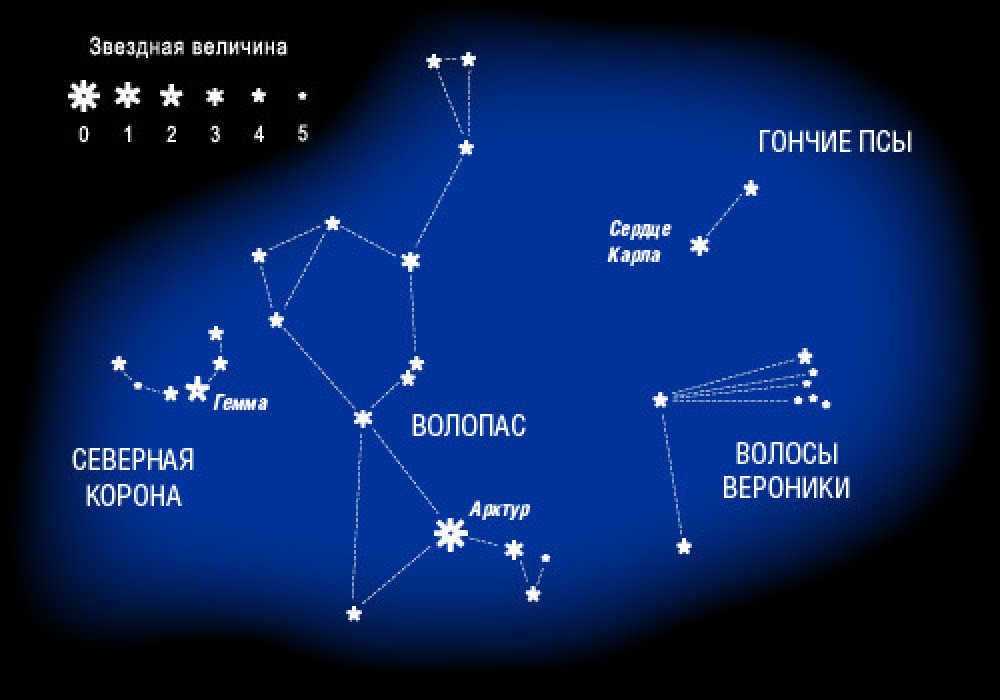
Etymology
The celestial formation known as Volopassus is named after its resemblance to an airborne serpent.
Many astronomers posit that certain stars within the Arcturus stream possess distinct compositions compared to other stars found within Volopassus.
The popular theory among scientists is that these extraterrestrial stars, including Volopassus’ Beta, originated beyond our own galaxy.
The irregular quadrilateral formed by the four brightest stars (Alpha, Gamma, Delta, and Rho) in the constellation is known as the Trapezoidal Asterism.
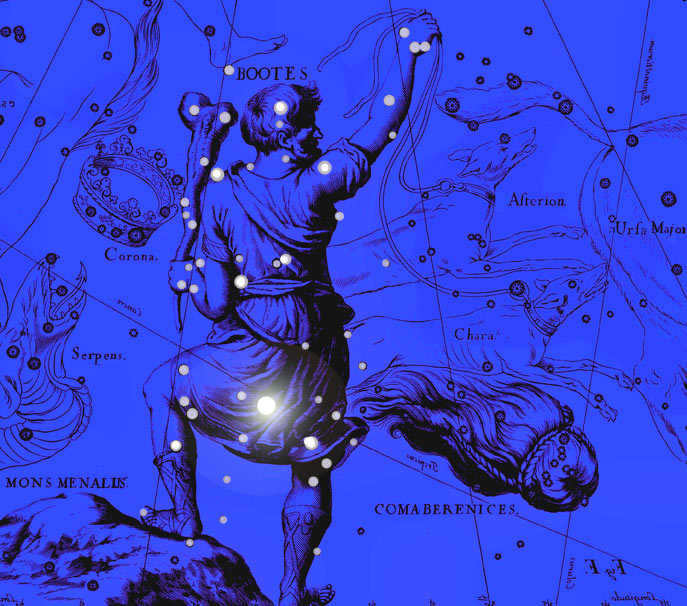
In 2015, astronomers discovered the farthest and most visible galaxies from Earth in the Volopassus constellation. The light emitted by these galaxies has traveled for over 13 billion years to reach our planet.
The Volopassus constellation covers an area of 907 solid angle units.
Volopas is responsible for three major meteor showers:
The January and June Boötids occur during their respective months. The Quadrantids meteor shower can be observed every year from December 28 to January 7.
The peak activity of the Quadrantids meteor shower is on January 3 and 4, during which up to 200 meteors can be seen per hour.
It’s important not to confuse a meteor shower with a meteorite shower. During a meteor shower, meteors burn up in the atmosphere, while during a meteorite shower, meteorites fall to the surface of the Earth.
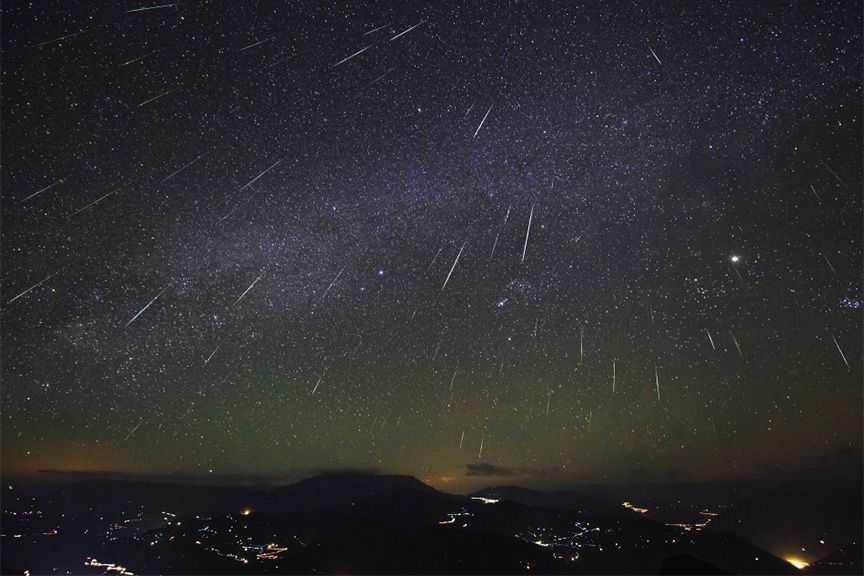
Location in the Celestial Sphere
Volopas is readily visible to the naked eye and can be found in the southern part of the sky, positioned below the Big Dipper. To locate its main star, Arcturus, one should look towards the east of the constellation Virgo.
During the spring season, when the visibility of Volopas is at its peak, it can also be spotted in proximity to the Little Dipper. The Little Dipper is situated directly beneath it, serving as a helpful guide to locate the constellation. By recognizing the distinct orange hue of Arcturus, observers can easily identify Volopas in the night sky.
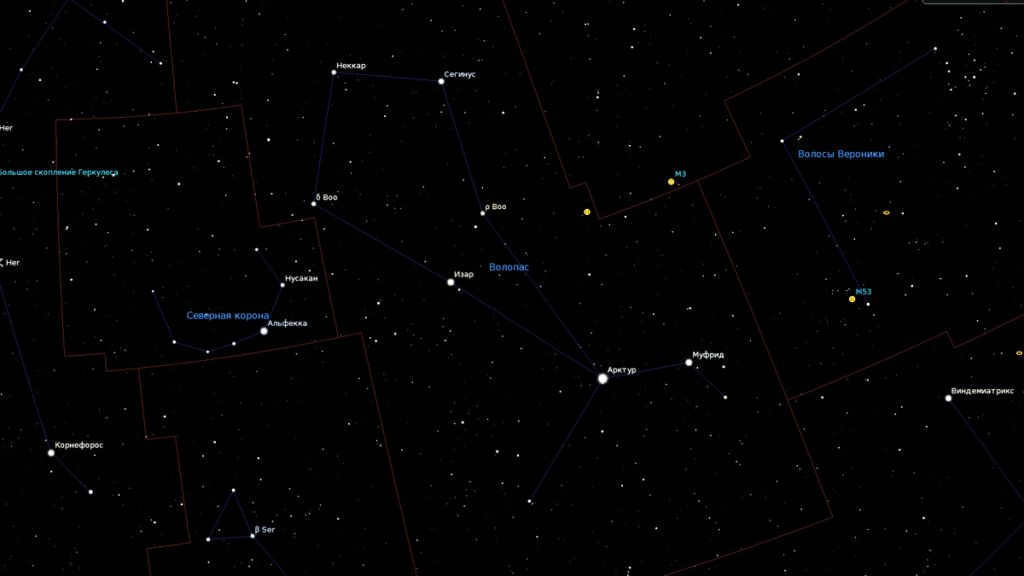
The legend of the Volopassus constellation
The term “Volopassus” was initially utilized by Homer in The Odyssey. It referred to celestial signs utilized for navigation at sea. There is no agreement on which character the Volopassus constellation represented in Greek mythology. There are multiple purported myths associated with it:
- The goddess of fertility, Demeter, had a demigod son named Philomel. He lived a life of poverty. One day, he purchased bulls from his brother, Plutos, built a cart, and began farming. His mother noticed this and transformed Philomelos into the constellation of Ursa Major, which is within the Magpies constellation.
- Once upon a time, the deity Dionysus decided to grace Icarius, a regular resident of Attica, with a divine visit. In a gesture of hospitality, Icarius generously served the god his finest libations, and in return, he was bestowed with an abundant harvest of grapes. Impressed by this unexpected gift, Icarius became intrigued by the art of winemaking and embarked on a journey to share this newfound elixir with the world. However, tragedy befell Icarius when, in a state of intoxication caused by his own creation, the people he encountered misinterpreted the effects of the wine and tragically ended his life, believing they had fallen prey to poison. As a way to honor Icarius’ memory, the city of Athens established an annual commemorative festival known as the Eora. This festive occasion serves as a tribute to Icarius, with the Athenians symbolically representing him through the constellation of the Magpies.
- After maturing, Arcades, the son of Zeus, launched an attack on Lycaeus, where he engaged in a scandalous affair with his own mother. The people of Lycaeus were horrified by this shocking act and united to punish Arcades and his mother. However, Zeus stepped in and transformed the enraged inhabitants of the city into the constellation known as Ursa Minor, or the Little Bear. Alternatively, according to another legend, the entire city itself transformed into the star Arcturus. Both Ursa Minor and Arcturus can be found within the constellation of Bootes.
Arcturus
Arcturus, also known as Alpha Volopassus, is a prominent star that shines brightly in the night sky. It holds the distinction of being the brightest star in the Volopassus constellation.
Throughout the year, Arcturus can be observed in Russia, but it is particularly visible during the spring season. Locating this star is quite simple – one must trace an arc through the three “bucket stars” of the Big Dipper.
Fascinatingly, Alpha Volopasa holds the distinction of being the first star in the history of astronomy to be visible through a telescope during daylight hours.
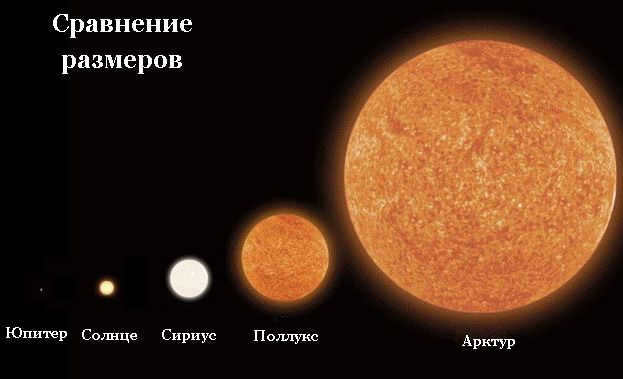
Here’s a unique version
This star, known as Volopassus, is famous for its ability to transform into a red giant. With a surface temperature exceeding 6000 Kelvin, it shares a similar color with the Sun.
With an estimated age of 2.7 billion years, Eta Volopasa is expected to evolve into a neutron star in a few hundred million years, eventually leading to its transformation into a black hole.
The Gamma of Volopasa
Gamma Volopasa belongs to the group of stars known as variable stars. These stars are unique in that they exhibit fluctuations in the brightness of their emitted light. These fluctuations are caused by the continuous pulsations occurring on the star’s surface. In the case of Gamma Volopasa, its rotation speed is exceptionally fast, reaching approximately 128 kilometers per second.
Beta Volopassus
The star Beta Volopassus is positioned in close proximity to Arcturus. During ancient times, it was known by the Arabic designation Nekkar. Despite its designation as Beta, it is merely the sixth most luminous star in existence. This disparity arose due to an error in reasoning by astronomers, who assigned names to celestial bodies based on their spatial arrangement rather than their luminosity.
The planet orbiting the star Tau belongs to the class of “Hot Jupiter” exoplanets and is known for being extensively studied. The proximity of the planet to the star results in a surface temperature of approximately 3000 Kelvin.
Epsilon Volopas
Epsilon of Volopassus is a constellation that contains a multiple star system consisting of Volopassus A and Volopassus B. Multiple star systems appear close together when observed from Earth, but in reality, they are located at significant distances from each other.
Delta Volopassus
Delta Volopassus is a binary star situated in the northern constellation of Volopassus. It possesses a significant luminosity and can be observed with the unaided eye even in the presence of a full moon. Interestingly, it could have been designated as Beta Volopassus due to its exceptional brightness. In earlier astronomical records, this star was referred to as “Princeps,” a Latin term meaning “prince.” The rationale behind this appellation remains a mystery.
Volopassus’s Hat
The hat of Volopassus bears resemblance to Delta Volopassus, although there are some distinctions. Both are binary stars, but only one of them shines brightly. The other star is significantly dimmer and can barely be seen, even with the aid of a telescope.
Volopassus is a constellation that can be found in the northern hemisphere and is one of the largest constellations in the night sky. Its name is derived from the Greek word “Βοώτης” which means “plowman” or “shepherd”. It was first documented by Ptolemy in the 2nd century. Volopassus is home to the third brightest star, Arcturus, which is surpassed in brightness only by Sirius in the Canis Major constellation and Canopus in the Carina constellation.
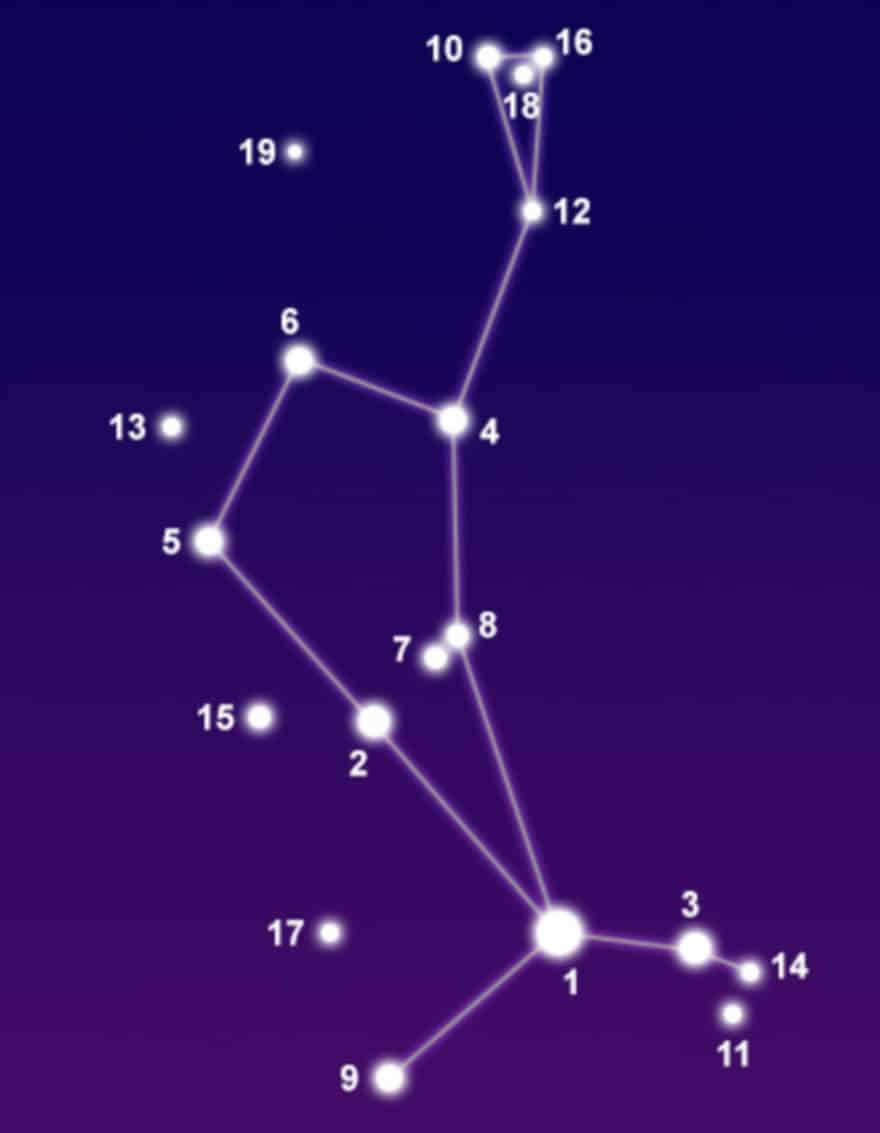
Facts, position, and map
The constellation Volopassus occupies an area of 907 square degrees, making it the 13th largest constellation. Situated in the third quadrant of the northern hemisphere (NQ3), it can be observed in latitudes ranging from +90° to -50°. It shares its vicinity with the constellations Serpent, Hercules, Dragon, Northern Crown, Veronica’s Hair, Hound Dogs, Virgo, and the Big Dipper.
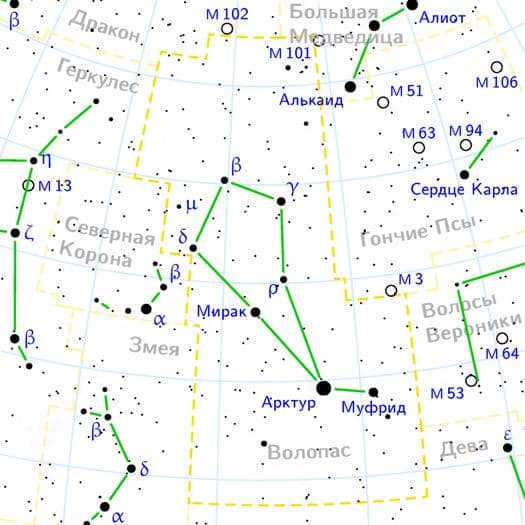
Legend
Historically, the mythological representation of the Volopassus constellation depicts a youthful man accompanied by two hunting canines on a tether and wielding a cudgel. Within the celestial sphere, he voyages in the wake of the Ursa Major constellation near the celestial pole. Numerous narratives unveil the persona of Volopas. He was originally a farmer who guided oxen around the Ursa Major constellation. In his wake, his loyal canines always trailed: Asterion and Chara, known as Hound Dogs. He secured the oxen to the polar axis, thereby ensuring the continuous rotation of the heavens.
Frequently, he appeared in the form of Arkas, the offspring of Zeus and Callisto. He was raised by Lycaon, his grandfather and the ruler of Arcadia, who once decided to test the divinity and prepared Arkas as a meal. However, Zeus saw through the king’s machinations and transformed him into a wolf, annihilated all of his sons, and revived his own progeny.
However, the history of the constellation does not end there. Due to Zeus’ infidelity, his wife Hera became furious and transformed Callisto into a bear. Callisto roamed the forest for many years until she encountered her son Arkas. Unaware of her true identity, Arkas initiated a hunting party. Seeking refuge, Callisto sought solace in a temple where Arkas could not enter. To aid them, Zeus intervened and elevated them to the night sky as the constellations of the Big Dipper and Volopas.
Another myth associated with the constellation involves Icarius, who possessed vineyards. One day, he invited Dionysus to visit him. Astonished by Icarius’ generosity, Dionysus shared with him the secret of winemaking. Icarius enjoyed the beverage so much that he invited all his friends to partake. However, the next morning, his friends, suffering from hangovers, mistakenly believed they had been poisoned. In a fit of anger, they killed Icarius while he slept. Deeply saddened by this turn of events, Dionysus immortalized his friend by placing him among the stars.
In the previous narrative, the Magus was the individual responsible for inventing the plow. Ceres rewarded him by elevating him to the heavens.
The primary celestial bodies
Let us closely examine the celestial bodies within the Volopassus constellation, providing detailed descriptions and characterizations accompanied by photographs.
Arcturus (Alpha Volopassus) – an orange giant classified as K1.5 IIIpe (distinguished by its atypical light spectrum and the presence of emission lines). It is located approximately 36.7 light-years away from Earth, with a luminosity 110 times greater than that of the Sun. It moves at a velocity of 122 km/s relative to the solar system. In approximately 4,000 years, it will reach its closest proximity to the Sun.
Ranked as the third brightest celestial object in the sky, and the brightest within the northern hemisphere. It possesses an apparent visual magnitude of -0.04. Occasionally, it is classified as the fourth brightest, following Alpha Centauri due to its binary star nature, resulting in a total magnitude of -0.27.
However, Arcturus also serves as the third prominent star in the nighttime sky, coming after Alpha Centauri A (the most brilliant star in Centauri and the fourth brightest star overall). In ancient Greek, its name translates to “guardian of the bear.” Positioned at the left leg of Volopassus, it stands alongside the Big Dipper and Little Dipper.
Detecting Arcturus poses no challenges if one follows the path of three bright stars that compose the handle of the asterism in the Big Dipper. This star is part of the Local Interstellar Cloud, which the Earth and Solar System are currently traversing. Spanning a diameter of 30 light-years, Arcturus is considered an old disk star. It appears to be in the company of 52 other old disk stars, collectively known as the Arcturus Stream.
Neckar (Beta Volopassus) is a giant star of yellow G-type located 219 light-years away. This star is known for its flaring behavior, which causes it to temporarily increase in brightness. The name Nekkar was derived from a transliteration error of the Arabic word meaning “cattle driver”. Additionally, this star is sometimes referred to as “Meres”.
Seginus (Gamma Volopassus), on the other hand, is a variable star of the delta type in the constellation of Shield. Its brightness varies due to radial and non-radial pulsations on its surface. It is positioned 85 light-years away from Earth. With a period of 6.97 hours, its magnitude fluctuates between 3.02 and 3.07. The spectral class of Seginus is A7III.
Isar (Epsilon of Volopassus) is a binary star system situated 300 light-years away. It consists of a brilliant orange giant and a smaller, dimmer main-sequence star. This celestial object is also commonly referred to as Pulcherrima, which is the Latin term for “beautiful”. Additionally, it has the name Izar, which translates from Arabic as “veil”. Other traditional designations include Mirak, meaning “loins” in Arabic, and Mizar.
Mufrid (Eta Volopasa) is a double star system with a spectroscopic nature and a period of 494 days. It is positioned in close proximity to Arcturus, which is about 3.24 light-years away. This celestial body traditionally acquired the name Mufrid, derived from the Arabic phrase “a distant star from a man with a spade”. It is also known as Saak. The distance between Mufrid and our planet is approximately 37 light-years. Its spectral class is G0 IV and it exhibits a notable abundance of elements heavier than hydrogen.
Alcalurops (Mu Volopas) is a triple star located 121 light-years away. The primary star in this system is a subgiant of spectral type F, with a yellow-white color and a visual magnitude of 4.31. It is accompanied by a double star located 108 arcseconds away. The name Alcalurops is derived from the Greek word “kalaurops,” which means “shepherd’s staff.”
Merga (38 Volopassus) is a star of spectral type F7IVw and is located 153 light-years away. The name Merga comes from the Arabic phrase for “chained woman.” It has a visible magnitude of 5.74.
Nadlat (Psi Volopasa) is an orange giant of spectral type K, located 250 light-years away. It has an apparent magnitude of 4.52.
Τ Volopasa (Tau Volopasa) is a double star located 51 light-years away. It consists of a yellow-white dwarf and a dim red dwarf. The yellow-white dwarf is known to have an extrasolar planet, which was discovered in 1996 and confirmed in 1999.
Astronomical Entities
The Great Volopassus Void, also known as the Volopassus Supergroup, is a celestial region comprising of an extremely low number of galaxies. Spanning a diameter of 250 million light-years, this spherical area is located at a direct ascension of 14 h 20 m and a declination of 26°. In 1981, Harvard College astronomy professor Robert P. Kirchner made the discovery as part of a galactic redshift survey. Within the void, there are a minimum of 60 galaxies present. Notably, American astronomer Gregory Scott Alderling stated, “If the Milky Way had been positioned at the heart of the Volopassus Superscale, we would not have been aware of the existence of other galaxies until the 1960s.”
Volopassus I (also known as the Volopassus Dwarf Galaxy) is a small spherical galaxy located 197,000 light-years away. It is considered one of the dimmest galaxies in existence, with an absolute magnitude of -5.8 and an apparent magnitude of 13.1. Due to its low brightness, it was only discovered in the year 2006. Volopassus I is in orbit around the Milky Way galaxy and due to its peculiar shape, it gives the illusion of being crossed by our own galaxy. Its diameter spans approximately 720 light-years.
NGC 5466, on the other hand, is a globular cluster situated in the constellation of Wolopas, located at a distance of 51,800 light-years from Earth.
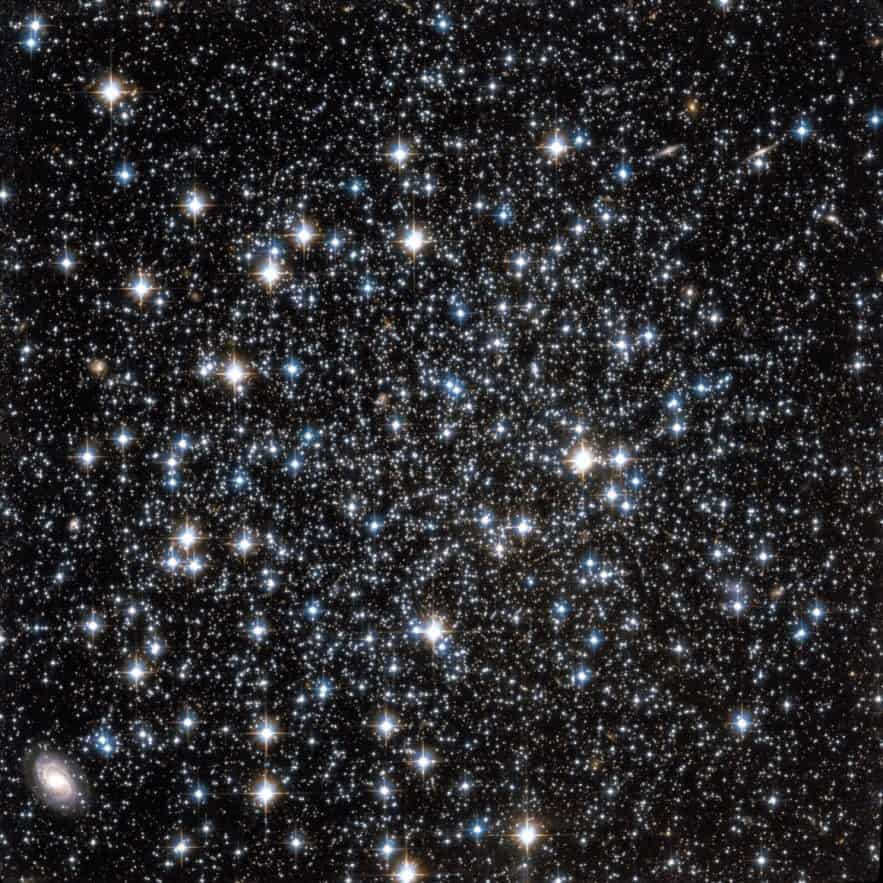
The discovery of NGC 5466 was made by the British astronomer William Herschel in the year 1784. This stellar cluster is located approximately 52,800 light-years away from the center of our galaxy and is believed to be the origin of a fascinating celestial phenomenon known as the 45-degree Tidal Stream, which was first observed in 2006. What makes this cluster particularly interesting is its blue horizontal branch of stars and its relatively low metal content.
If you are interested in studying the Volopassus constellation in more detail, we recommend utilizing not only our collection of photographs, but also 3D models and an online telescope. Additionally, you may find a static or movable star map useful for your own personal exploration.
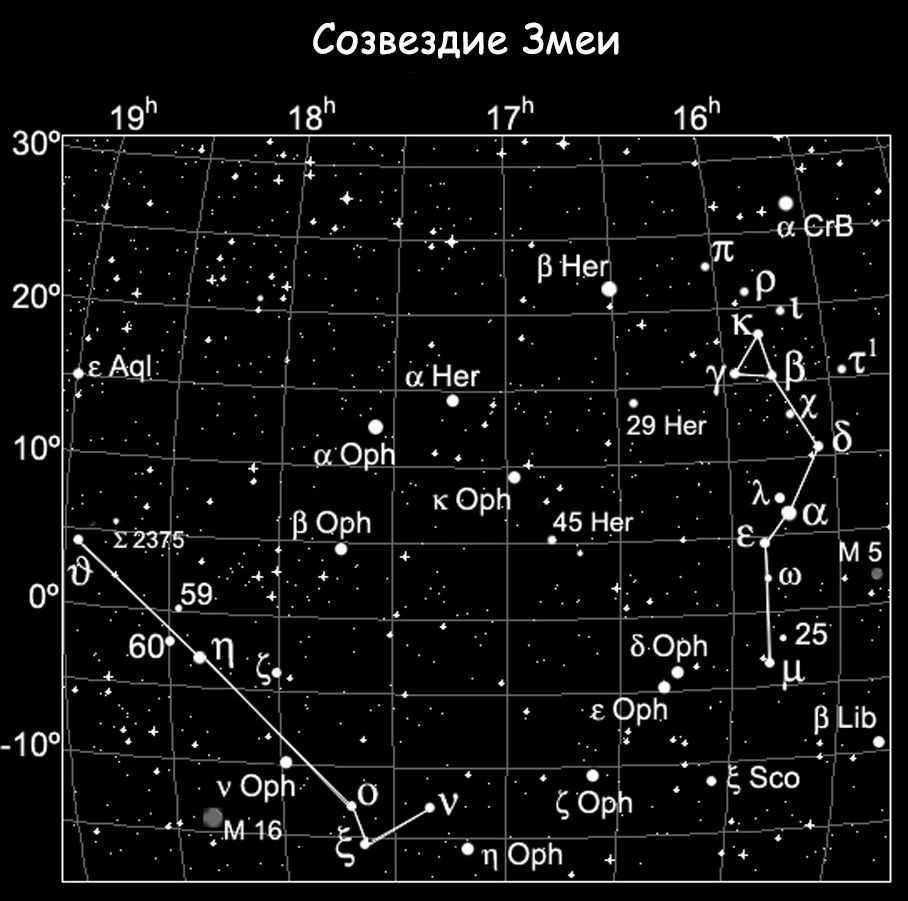
In the second century, Ptolemy introduced the interesting constellation of the Serpent to humanity, which can be found in the Northern Hemisphere.
A unique celestial constellation
Unlike any other constellation in the sky, the Serpent is composed of two separate parts. The Serpent’s “head” and “tail” are divided by the Serpentine constellation. Once, these two constellations were part of a single entity, but now they are distinct parts of the night sky.
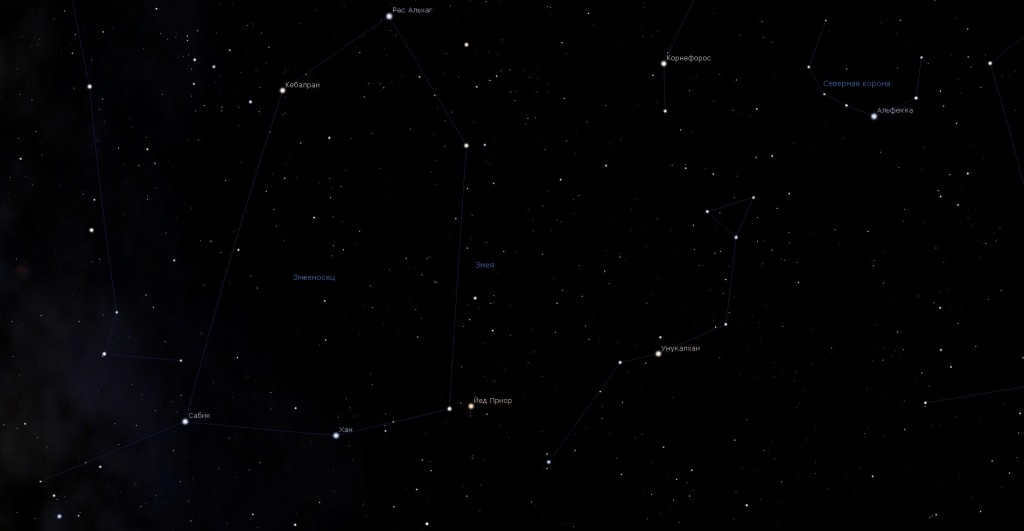
The Serpent constellation can be observed in the Stellarium planetarium program.
The Snake constellation is classified as equatorial and is surrounded by the constellations Volopassus, Hercules, Shield, and the Northern Crown, as well as the zodiac signs Libra, Virgo, and Sagittarius. It covers an approximate area of 637 square degrees in the sky, ranking 23rd out of the 88 available constellations. On a clear night, around 106 stars can be seen within this constellation. The best time to observe the Snake constellation is during the summer, particularly in June. It can be viewed from any location within the Russian Federation.
Let’s discuss the celestial bodies
Alpha Serpent
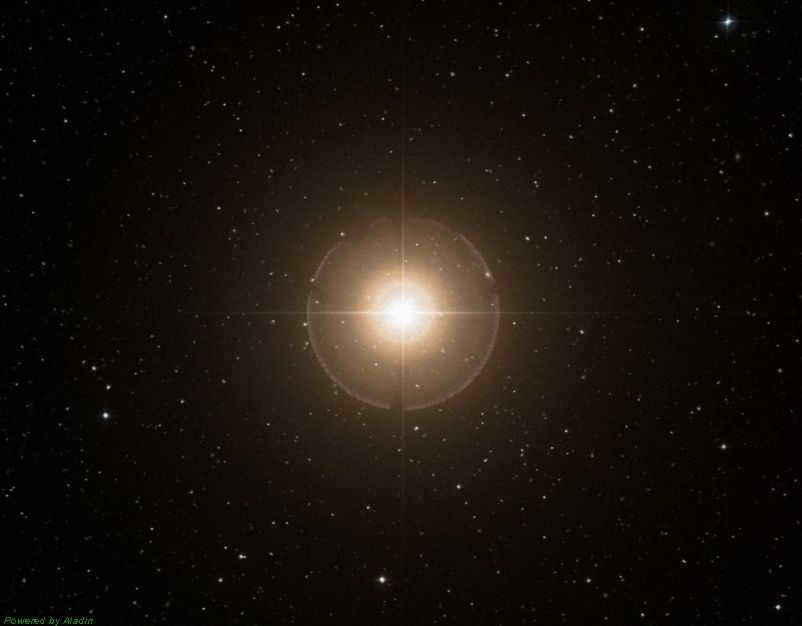
Unfortunately, the observer will not be able to find any first magnitude stars in this constellation. The brightest star in Serpent is known as the alpha star, but it only has a third magnitude. This star has an apparent brightness of 2.65m and belongs to the K2 III spectral class. Often referred to as the heart or neck of the constellation, it is located in the Serpent’s Head region. Alpha Snake is a multiple star system located 73 light years away from Earth. Within alpha, there are three stars: two main stars of class K0 with an apparent brightness of 2.7m, and another component with a stellar magnitude of 11.7m.
This Serpent
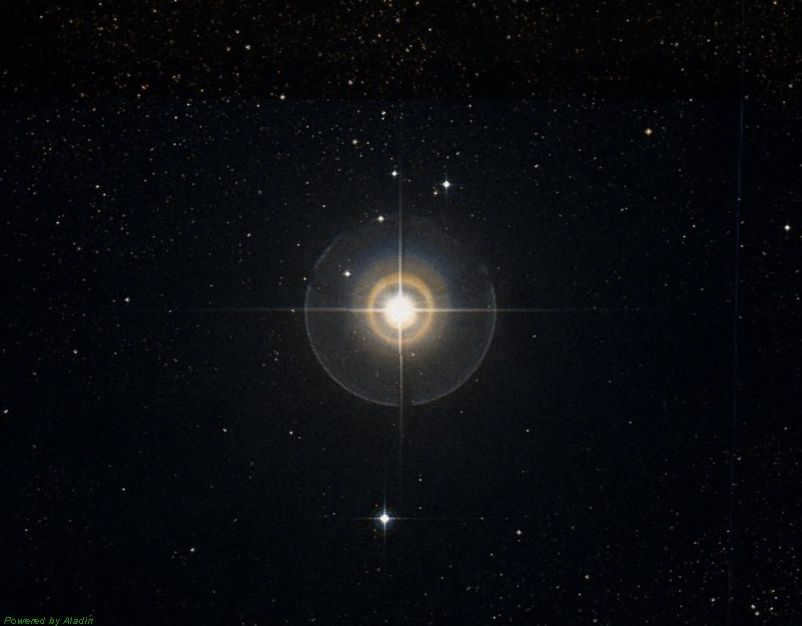
The second brightest star in the constellation Serpent after Alpha is known as Eta. It is a binary system comprised of an orange giant and a faint 12th magnitude companion. This system is located approximately 62 light-years away from our planet. In various references, this star is sometimes referred to as Tang. This name was bestowed upon the star in honor of the ancient Chinese Tang dynasty.
Snake’s Delta
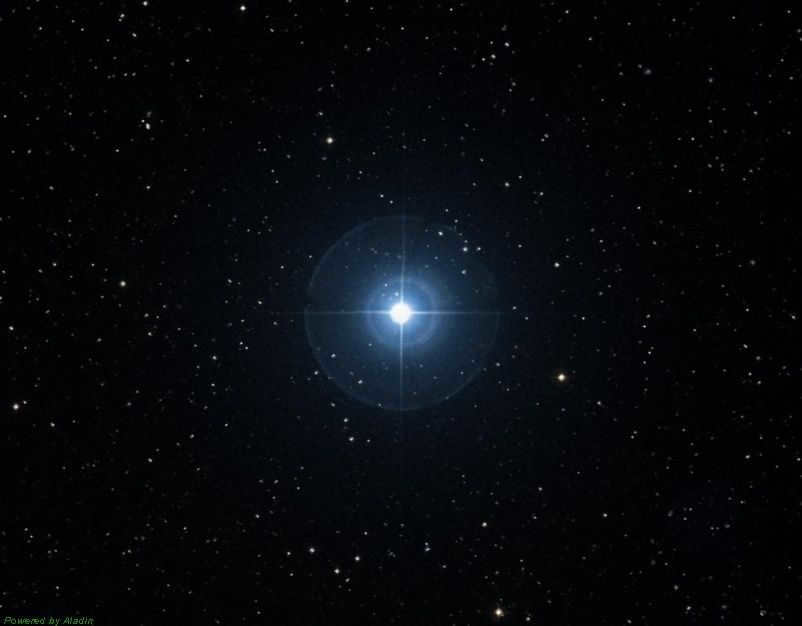
The Delta of the Serpent, known as Delta Serpenta, is an intriguing celestial body located 210 light-years away from Earth. It is composed of a fascinating pair of double stars. Interestingly, the name of this Delta is reminiscent of the Jin Dynasty of China. The primary component of Delta Serpenta is a white-yellow subgiant star, which is often categorized as a variable star in the neighboring constellation Shield. Accompanying this star is a fainter F-class subgiant. Additionally, within the system, there are another two stars with magnitudes ranging from 14 to 15.
The Eagle Nebula
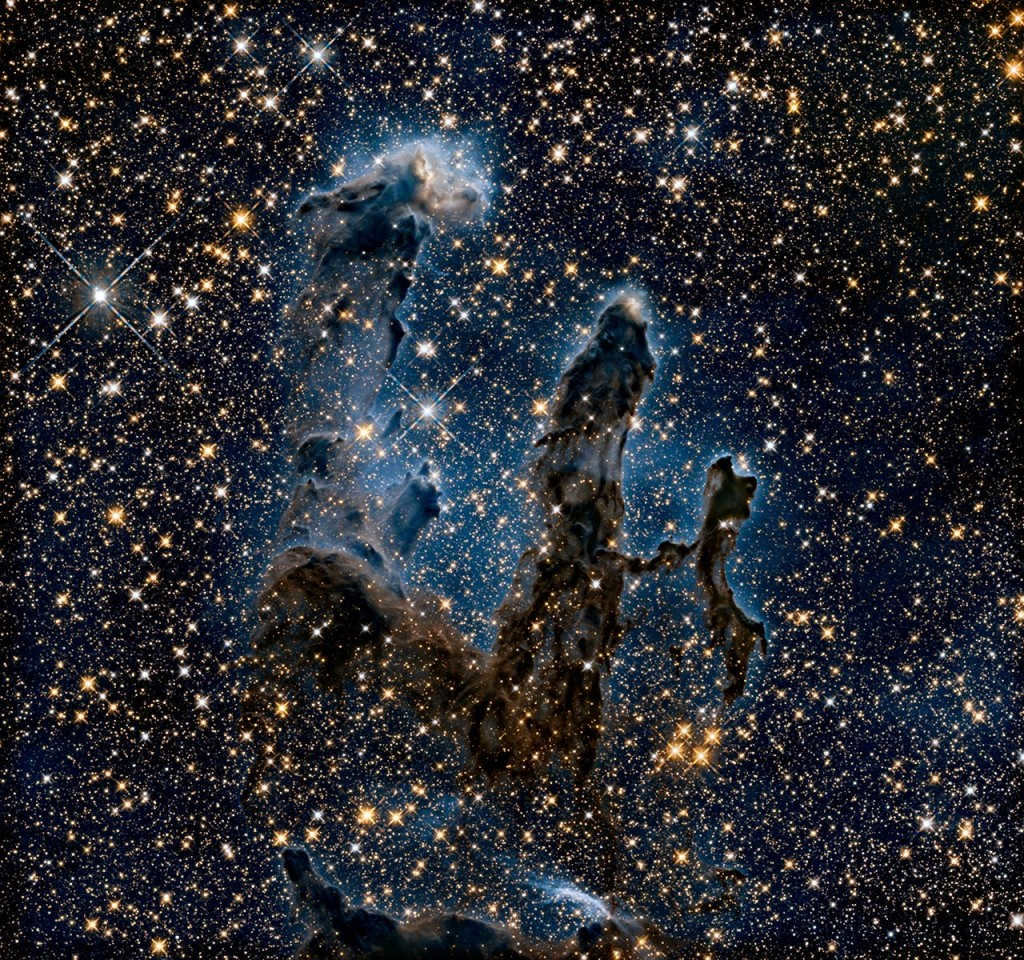
Photograph of the Pillars of Creation within the Eagle Nebula M16, captured using infrared imaging techniques.
Similar to many other celestial constellations, the Serpent offers a plethora of fascinating deep space phenomena to observe. One notable example is Messier object number 16, also known as NGC 6611. This particular object is none other than the Eagle Nebula, which holds great significance for astronomers. M16 is a relatively young star cluster that bears a resemblance to the silhouette of a bird of prey. Within the nebula, there are distinct visual features, such as a region where stars are being formed, including a group of gas columns referred to as the Pillars of Creation.
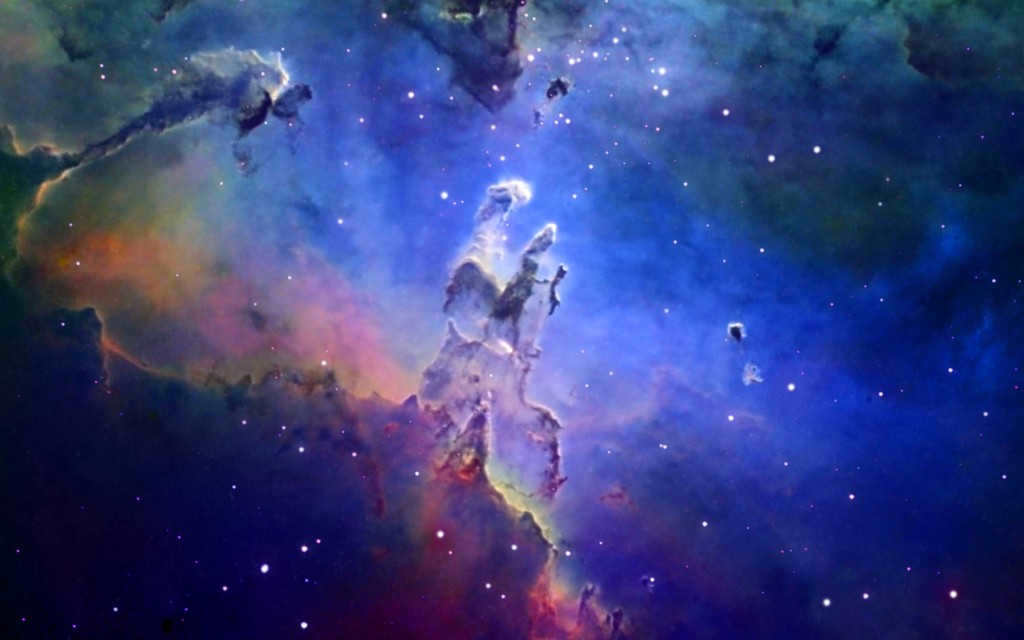
Image by photographer Fred Vanderhaven
It is believed that the current pillar structure originated from the demise of a supernova star. The complete Eagle constellation is a component of a different emission nebula called IC 4703, which is situated 6500 light-years away.
The M5 globular cluster
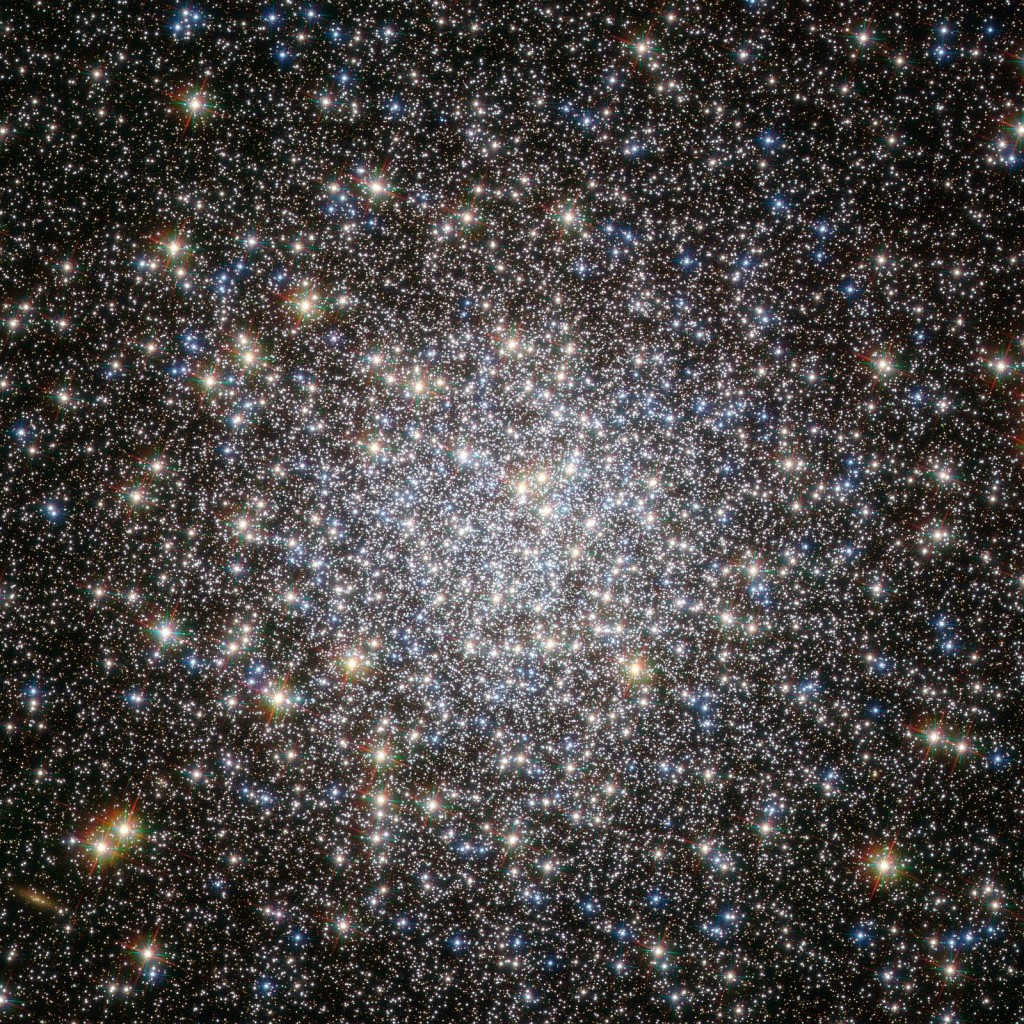
Photograph of the globular cluster M5
Another celestial object within the constellation is the globular cluster M5 or NGC 5904. To the naked eye, it may appear as a faint star, but upon closer examination, it becomes evident that the “small” star has a diameter of 165 light-years. M5 is one of the largest clusters currently known, and its brightest stars have a magnitude of only 12. However, it is home to a significant number of variable stars. Additionally, the cluster NGC 5904 is considered one of the oldest in our galaxy, with an estimated age of approximately 13 billion years.
The Background
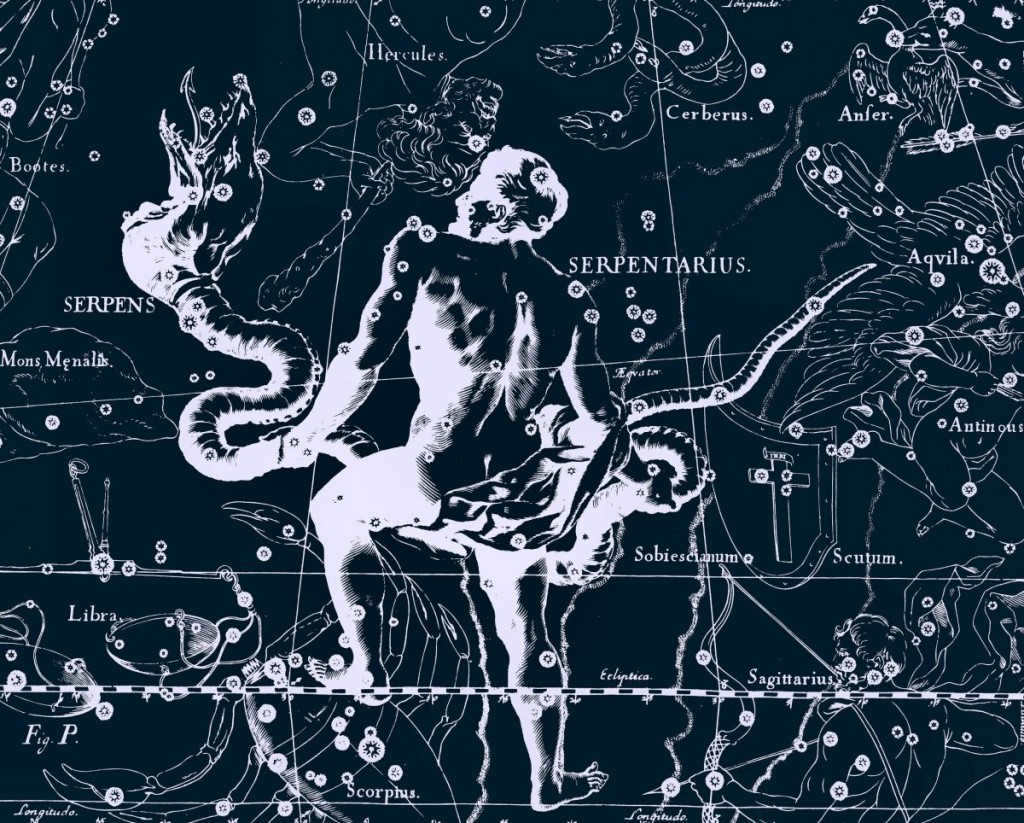

An aerial serpent constellation, depicted in a drawing by Jan Hevelius from his collection of celestial maps

